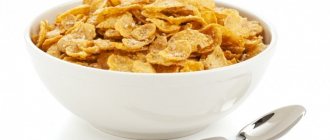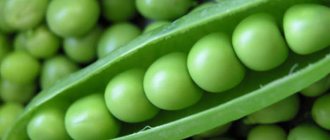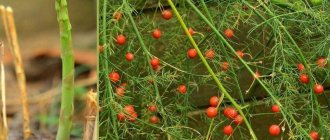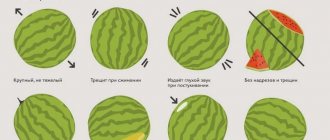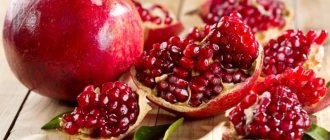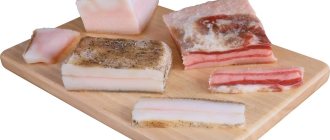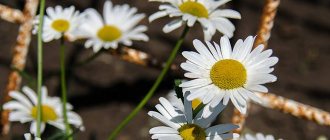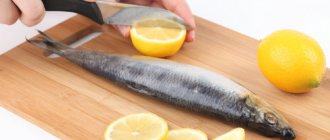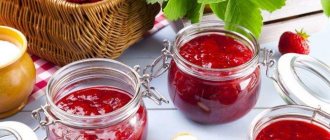The longing for sweets often torments nursing women, because it is very difficult to adhere to a Lenten menu. One of the most popular delicacies for breastfeeding is halva. Despite the fact that this is a very healthy product, halva during breastfeeding in the first month can be dangerous for the baby. So when can you introduce this sweet product into your diet and how to eat it for the benefit of mother and child, read the article.
Composition and calorie content of sweets
The main ingredients in halva are:
- Protein part. It includes nuts, peanuts, sesame, etc.
- Caramel mass. Consists of sugar or molasses.
- A foaming agent that helps form a fibrous structure in sweets. It consists of egg white or marshmallow root.
- Various flavorings (honey, vanillin, chocolate, etc.).
This is interesting. Modern manufacturers create different varieties of halva, depending on its basic ingredients. This is how sweets are distinguished: sesame, sunflower, peanut, and also those made from vanilla, nuts, chocolate and pistachios.
In the vastness of Ukraine, Belarus and Russia, halva made from sunflower seeds is considered the most popular.
Is halva good for mother and baby while breastfeeding?
Halva is a dessert made from nuts and seeds, which is prepared using honey, caramel, sugar and other sweeteners. There are many recipes, so the beneficial properties may vary. The product is high in calories, therefore it is an excellent source of energy. Since the recipe requires the use of high temperatures in preparation, you should not expect that halva is as healthy as the seeds and nuts from which it is made.
The product contains many vitamins, minerals and other beneficial substances that will benefit the mother’s body, depleted by pregnancy and breastfeeding.
A third of the composition of halva is vegetable fats. In addition, the composition includes folic acid and proteins. It is rich in vitamins B, PP, calcium, magnesium, sodium, iron and other minerals.
Halva has the following positive effects:
- increasing the fat content of breast milk;
- improvement of lactation;
- fight against fatigue;
- improving the functioning of the gastrointestinal tract;
- acceleration of metabolism;
- normalization of the nervous system;
- improved mood;
- preventing the development of anemia;
- strengthening teeth;
- improvement of skin and hair condition.
The benefits of halva depend on the main component. For example, sunflower halva prevents cancer, peanut halva helps with constipation and improves the functioning of the cardiovascular system. Sesame halva helps with headaches and is involved in cancer prevention.
Possible harm to nursing mother and newborn
Despite all the benefits of the product, you should be very careful with this delicacy when breastfeeding. Halva contains seeds and nuts, most of which are among the strongest allergens.
The baby's fragile body receives with milk everything that the mother eats, so there is a high risk of an allergic reaction. It can manifest itself in the form of a rash, runny nose, sneezing, coughing, nasal congestion, and even angioedema or anaphylactic shock. Be especially careful with peanut halwa.
In addition to allergic manifestations, halva can cause increased flatulence and constipation. In young children, this can lead to colic, diarrhea or constipation, since the treat is a very difficult food for digestion. Consuming the product in large quantities may cause chills or drowsiness. Since halva is a very high-calorie dish, it can provoke rapid weight gain if you eat too much of it.
Not everyone is allowed to eat healthy treats. Contraindications include the following diseases:
- allergy;
- diabetes;
- obesity;
- diseases of the gastrointestinal tract;
- pancreatic diseases;
- urolithiasis disease;
- liver diseases.
Is it possible to eat halva and how to use it correctly while breastfeeding?
Since halva is a valuable and healthy product, it is possible and even healthy to eat it while breastfeeding. It is only important to adhere to the rules of its use. Read the composition of halva carefully, as for the first time it is recommended to eat the product with a minimum amount of components, avoiding preservatives, dyes and other harmful substances. Choose nuts and seeds that are considered the least allergenic. It is better to postpone the peanut delicacy until the baby is older.
The first time, cut yourself a small slice and try it in the morning with clean water or tea. A negative reaction usually appears in the first day after use, but it can happen later, so it’s best to observe for about a week.
If you notice allergic reactions or tummy problems, put the product aside for 2-3 months. If the baby feels well, you can gradually increase the portion. The maximum amount should not exceed 50–100 g per day. Halva should not be eaten more than 2-3 times a week.
How much halva can you eat a day?
| 1 month | 2 months | 3 months | 4–5 months | |
| How much halva can you eat? | Absolutely forbidden | You can do this after consulting your doctor; he will determine the dosage. | You can introduce small amounts of halva from minimally allergenic components into your diet. | You can consume up to 50–100 g per day no more than 3 times a week |
In the first week, first month after birth
In the first month after childbirth, especially in the first week, doctors recommend abstaining from sweets. It is recommended to eat strictly according to the breastfeeding diet. Experiments with introduction to the diet are prohibited.
Since halva is considered a very allergenic product, eating it in the first month after childbirth is strictly prohibited.
Some recommendations for consuming halva while breastfeeding
Can I use halva while breastfeeding? The answer is yes, you just need to follow some recommendations:
- you need to start eating the above product with a small piece, while carefully monitoring the baby’s reaction to this innovation;
- in most cases, only sunflower halva without dyes and other additives can benefit the body;
- The body of both a woman and her baby can react differently to different types of halva, that is, it is undesirable to experiment during this period;
- You should refrain from the above delicacy if it contains honey, since this product is allergenic.
What kind of halva and when is it possible?
Doctors do not recommend introducing halva and marshmallows into the diet during breastfeeding until the child is 3 months old, but noting the benefits of the product, they sometimes allow it earlier. In this case, it is necessary to choose a product from the least allergenic components.
Sunflower
Sunflower halva is one of the most popular in our countries. It is rich in B vitamins and amino acids. Sunflower seeds are used to prepare it. It is useful for normalizing the functioning of the nervous system and has a beneficial effect on the functioning of the gastrointestinal tract. In addition, this halva strengthens the immune system and has a good effect on the condition of the skin and hair.
Thanks to regular consumption of treats, you can improve blood circulation and remove cholesterol from the blood. It normalizes the level of acid in the stomach.
Peanut
Peanut halva is considered one of the most healthy, and at the same time, the most allergenic. It contains a large amount of folic acid, vitamins B, D, PP. Its valuable composition makes it beneficial for the cardiovascular system. It actively promotes rejuvenation of the body, improves the condition of bones and teeth. This halva has a good effect on brain function.
Be careful when choosing peanut halva. It is best to prepare it at home, so you can be sure of the benefits of all the components.
Due to the high allergenicity, it is best to try this type of halva later. It's best to try peanuts first. If there is no reaction to the nut, your introduction to halva will most likely go well.
Tahini (sesame)
Sesame halva is a product made from sesame seeds, while tahini is made from cake. This halva is a storehouse of B vitamins, linoleic acid, PP, magnesium, calcium, zinc, iron, phosphorus, copper and other useful substances.
It has the following useful properties:
- prevention of anemia;
- fight against colds;
- improving the condition of skin, hair and nails;
- cancer prevention;
- maintaining youthful skin;
- improving brain function;
- replenishment of the body’s energy reserves, etc.
This delicacy is considered safe during breastfeeding. Negative reactions in mother and baby to the product are extremely rare. Consuming the product in large quantities is harmful.
Pistachio
Pistachios are rightly called “fruit of the tree of life.” They have high nutritional value: nut kernels contain 50% fatty acids, are rich in fiber, etc. "long" carbohydrates. Thanks to the latter, the nursing mother does not risk gaining weight, but will be full of the energy she needs so much.
Pistachios, like other nuts, contain a lot of vitamins A, E and group B, and they are also rich in copper, manganese and phosphorus.
Uzbek
This is a healthy and tasty delicacy that you can easily prepare yourself. Self-prepared Uzbek halva is allowed from 1 month after birth. To reduce the risk of negative effects on your baby, use goat's milk rather than cow's milk.
On fructose
Fructose halva is considered no less healthy than regular halva, since fructose is a natural sweetener that is widely used in cooking. It practically does not change sugar levels, is well absorbed and has fewer calories than many sweeteners. This halva consists of sunflower (or other seed and nut) mass, molasses and fructose. You can eat halva with fructose during breastfeeding. If you see any sweeteners or preservatives in the product, you should not eat it.
In Apple pie order
Often women are interested in what sweets they can eat while breastfeeding, because a bland diet quickly gets boring. Halva in chocolate is different from regular chocolate glaze. Since it is not recommended to eat chocolate during breastfeeding, you should not eat halva in chocolate either. Store-bought chocolate glaze contains many preservatives and chemical additives. It is better to choose pure natural halva.
Waffles with halva
Waffles with halva are a delicious and quick dessert. Waffles without harmful additives, which are usually present in store-bought products, can be eaten from two months after birth. To reduce the risk of allergies, use quail eggs instead of chicken eggs. They will need 2 times more.
How to eat halva correctly during lactation?
Mother's milk is the baby's main product, an invaluable drink. Breastfeeding lasts for years, and a young mother wants a sweet and tasty dessert. The energy spent can be replenished with health benefits and improve your mood. The lactation period is not a time of complete prohibitions, unless the child has allergies.
Mommy can try a small amount of halva 2-3 months after giving birth. In the morning on an empty stomach you can eat a piece of a natural product. If the child does not react negatively to an unknown treat during the day, the dosage can be increased gradually. The maximum amount should not exceed 100 g of product per day. However, if you experience a rash on the skin or abdominal pain, you need to wait a while with the introduction of this product. The child should be offered an antihistamine to prevent the reaction from worsening if an allergy occurs. When the intestines react negatively to the product, the mother mixes the enterosorbent and offers it to the baby.
When choosing halva in a package, it is important to study its composition, as well as the expiration date. The ideal composition for breastfeeding is sunflower or sesame halva. Oriental sweetness is famous for its natural, healthy composition, so it should contain only high-quality raw materials from seeds or nuts. Sugar is replaced with molasses or honey. The presence of artificial, synthetic additives is not permissible during lactation.
A serious violation of production technology is the presence of husks in compressed sweets. Dark deposits indicate that the product has been stored improperly or has expired.
When the woman started eating halva, a bitter, rancid taste of old sunflower oil appeared; it is better to discard such a dessert. The fatty components have oxidized, the sweetness is dangerous to the health of the consumer. This is fraught with serious poisoning or intoxication.
Eating treats in reasonable quantities once a day or every other day will not be harmful to the baby’s health.
Features of introducing halva into the diet during breastfeeding
However, breastfeeding experts believe that traditional halva will be much healthier for a new mother and breastfed baby than other industrially produced sweets. This dessert can be introduced into the diet of a nursing mother from about the second month, but with the obligatory observance of the following recommendations:
To feed a nursing mother, it is better to choose a dessert made from sesame seeds - this product rarely causes allergic reactions.
When you introduce this sweetness into your diet without consequences, you can try another type of halva. To prevent a new item on your menu from causing negative reactions, it is important to ensure that the dessert does not contain another allergen - honey.
- For your diet, choose halva that uses molasses, caramel or sugar as a sweetener.
- Halva should be introduced gradually during breastfeeding. You need to start consuming it with a small piece, gradually increasing the volume.
- To be completely sure that the new dessert during breastfeeding did not cause an allergic reaction in the baby, it is better to eat halva in the morning, before breastfeeding, and then observe the baby’s stool, his behavior and the condition of the skin for three days.
- If a child develops a rash, diarrhea or painful colic after eating halva by his mother, it is better to forget about this delicacy for 1-2 months.
- If the baby does not have any negative reactions, you can continue to eat the product, gradually increasing its “dosage” in your diet to the allowed 50-100 grams per day.
Halva is an incredibly tasty and healthy dessert. This sweetness can be introduced into the diet of a nursing mother; the main thing is to exercise restraint when consuming it and monitor the baby’s reaction.
Dose of halva consumption during breastfeeding
As mentioned earlier, you can start eating halva only gradually and with a small portion. Eat a small piece in the morning and drink water or unsweetened tea. Observe how your baby is feeling for one to two days.
If your baby develops allergies, colic or other disorders, postpone the introduction of halva into the diet for two to three months. If there is no negative reaction, then the nursing mother can eat halva.
The permissible daily intake for a nursing woman is 50-100 grams. When choosing or preparing treats, avoid formulations with honey.
If a nursing mother wants halva, do not deny this pleasure. In the absence of allergies, a small piece will not harm the baby. Remember that this product should be introduced into the diet very carefully.
Useful properties of the product
Thanks to this composition, the product contains a large amount of vitamins and minerals that are beneficial to both the woman and her baby.
- Vitamins of group B. Vitamin B1 has a positive effect on the developing nervous system of the child and on the processes occurring in the gastrointestinal tract. This vitamin is also necessary for the normal functioning of the heart and blood vessels. B2 ensures normal renewal of the skin, hair and nail growth. It is necessary for the normal functioning of the thyroid gland.
- Vitamin RR. This vitamin produces amino acids, which, in turn, are involved in the formation of respiratory tissue. In addition, this vitamin is necessary for the natural removal of excess cholesterol from the baby’s body.
- Vitamins of group E. They are necessary for both mother and child. Vitamins of group E are responsible for the formation of stable immunity to aggressive environmental influences. The largest amount of vitamin E is found in peanut halva.
- Calcium. Necessary for normal blood clotting, hormone production, and also for the formation of bone tissue.
- Magnesium. Ensures normal protein synthesis, removes excess cholesterol from the body of mother and baby.
- Sodium. Normalizes the acid-base balance in the body.
- Phosphorus. This element is necessary not only for the formation of healthy teeth and strengthening bones. It also ensures normal cell division and the preservation of all important hereditary information in them.
- Potassium. This element maintains normal blood concentration and helps normalize the frequency of muscle contractions.
- Iron. Ensures normal breathing and oxygen transport to internal organs.
What else is the product useful for?
Scientists have proven that including treats in a young mother’s diet provides:
- quick relief from postpartum depression;
- relief from postpartum anemia;
- improving the condition of teeth and bones.
Contraindications for halva during breastfeeding
Is it possible to eat halva while breastfeeding uncontrollably? Naturally, uncontrolled consumption of halva during breastfeeding is not recommended. There are certain types of this product that are strictly not recommended for young mothers during lactation.
- Halva in chocolate. This type of halva can lead not only to weight gain in a woman, but also to allergies in a child or, most dangerously, to a disorder of his central nervous system. Only a woman can decide whether to eat chocolate halva, but it’s still not worth feeding her such foods.
- Sunflower seed halva. The most common type of product and the most dangerous for the baby. Sunflower seeds easily accumulate all negative, toxic substances, for example, cadmium (a strong carcinogen), which can lead to vomiting and convulsions in the baby. Feeding your baby milk that contains carcinogens is dangerous for his health.
Doctors recommend eating sesame halva. It is most beneficial for both the mother and her child.
Individual intolerance to the product by the mother becomes the main contraindication to consuming halva. If a woman had allergic reactions to this product before pregnancy, then it is not safe to include it in the diet during lactation.
The product is also not recommended for women who:
- diabetes mellitus has been diagnosed (in this case, only a doctor can decide whether it is necessary to consume sweets during lactation);
- a severe form of pancreatitis was diagnosed;
- pathologies in the functioning of the liver and stomach were identified;
- problems with weight have been identified (the delicacy is second only to chocolate in terms of calorie content, so if you have gained a lot of weight during pregnancy, then it is better to avoid this delicacy after childbirth, during lactation; in general, feeding a woman who has gained a lot of weight during pregnancy not worth it).
Dose of halva consumption during breastfeeding
As mentioned earlier, you can start eating halva only gradually and with a small portion. Eat a small piece in the morning and drink water or unsweetened tea. Observe how your baby is feeling for one to two days.
If your baby develops allergies, colic or other disorders, postpone the introduction of halva into the diet for two to three months. If there is no negative reaction, then the nursing mother can eat halva.
The permissible daily intake for a nursing woman is 50-100 grams. When choosing or preparing treats, avoid formulations with honey.
If a nursing mother wants halva, do not deny this pleasure. In the absence of allergies, a small piece will not harm the baby. Remember that this product should be introduced into the diet very carefully.
Young mothers who are breastfeeding often feel the urge to indulge in some sweets. This is understandable, because during lactation a woman spends a large amount of energy, constantly lacking sleep and experiencing stressful conditions when caring for a baby, especially if the child is her first.
Having eaten sweets, the young mother is again full of strength and feels an emotional uplift, since food containing large quantities of carbohydrates gives impetus to the production of one of the hormones of joy - serotonin. This hormone helps keep the body in good shape, relieves fatigue and even pain, and improves mood. Therefore, it is useful to treat yourself to something sweet sometimes.
However, nursing mothers often deny themselves everything that could harm the baby if it passes through breast milk. And one of the most common taboos is usually sweets, because they contain many different additives, dyes and preservatives. In this regard, it is necessary to carefully choose which sweets can be harmful and which cannot.
Is halva a healthy product for breastfeeding? It is believed that halva is a healthy product that improves lactation. This statement is not without truth, because the seeds and nuts contained in halva help enrich milk with valuable nutrients. However, these same components are very strong allergy triggers, and if a nursing mother decides to eat halva, she needs to start with a small piece and monitor whether there is a negative reaction from the child’s body. If there is no reaction, you can try the halva again. But: if one of the family members, and especially mom or dad, is allergic to seeds or nuts, then you should stop eating halva.
Even if no one has any allergic reactions, halva during breastfeeding can cause difficulties in the child’s digestive system (colic, upset stool, flatulence), because it is a rather difficult product to digest.
Possible side effects when consuming halva while breastfeeding
This delicacy should not be on the first list when expanding the menu of a woman in labor. Despite the huge list of positive effects on both the body of a nursing woman and the baby, this product can also have a negative effect.
From mom's side
When a nursing woman consumes this treat, she may experience:
- allergic reaction (due to the increased content of amino acids, protein and additional ingredients that may be in its composition.);
- excess body weight (because this product is high in calories, it contains about 469 - 975 calories per 100 grams);
- exacerbation of diseases of the liver, pancreas, gastrointestinal tract;
- increased sugar levels (in patients with diabetes).
From the child's side
When this product is consumed by a nursing mother, the baby may experience the following side effects:
- allergic reaction (it can occur in the form of sneezing, coughing, runny nose, hives, nasal congestion);
- sleep disturbance;
- anxiety;
- colic;
- stool liquefaction;
- bloating;
- large monthly weight gain.
Halva during breastfeeding can cause the most serious consequence - anaphylactic shock.
Halva for breastfeeding
Halva is a very fatty product, so many sincerely believe that it can increase the fat content of mother's milk. However, breastfeeding experts say that this indicator of nutrient fluid does not change in any way depending on the woman’s diet. But on the other hand, the delicacy saturates the body with useful minerals, fatty acids and vitamins, which means they also enter the body of the baby who is suckling at the breast.
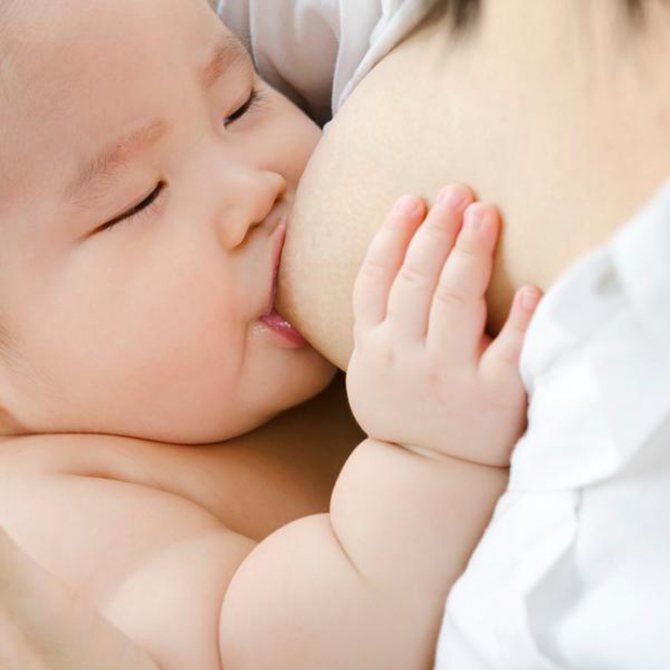
Halva does not affect the fat content and quantity of milk, but makes its composition more nutritious
Allergenicity of the product
The allergenicity of halva depends on what raw materials it is made from. Most often, allergies are caused by peanuts, so it is not advisable for a nursing woman to consume a treat with its addition.
Sugar itself is not an allergenic product, but it can increase its manifestations, for example, rash and itching.
As for homemade halva, it may contain honey, which also often causes the development of allergies in infants. When making treats yourself, a nursing woman should remember this danger.
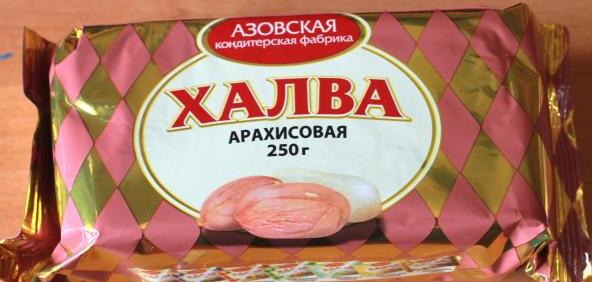
Peanuts cause allergies more often than other nuts, so it is better for a nursing mother to avoid peanut halva.
Recommendations for use during lactation
During lactation, a woman should not abuse the foods she eats. Excessive consumption of halva can have an unpleasant effect on extra centimeters in the waist area. Also, when purchasing this sweet, you should definitely pay attention to the expiration date and composition (it should not contain various emulsifiers and dyes).
There are also cases when the expiration date has not yet expired, and the product is no longer suitable for consumption; this is due to the addition of improperly stored seeds to the composition. Therefore, it is worth taking a close look at the appearance of this sweet (lack of moisture and mold). The product should be stored in the refrigerator.
IMPORTANT! You should not eat halva on an empty stomach or after a hearty lunch or dinner; it is important not to overload your stomach.
Recommendations for consuming halva during lactation
The rules for introducing foods during natural feeding are always the same: the mother eats a small amount and watches the baby.
How to properly introduce halva into the diet of a nursing mother
First, you are allowed to eat a piece of up to 5-10 grams and monitor the child for 24 hours. Adverse manifestations from the intestines appeared (loose stools, mucus, bloating, colic), skin rashes, redness, swelling, itching, the child became restless, appetite changed - these are signals to stop eating sweets. The next appointment is acceptable in 2-3 months. If there are no pathological reactions, the product is approved for use by a nursing mother. You should not try halva during breastfeeding in the first month; it is better to postpone the introduction of the treat to a later period. It is advisable to start trying halva from 2-3 months after birth.
How much halva can you eat per day while breastfeeding?
As mentioned above, start taking it with 5-10 grams. If the child is in good condition, daily consumption is increased to 30 grams. This will be enough to enjoy dessert, get a boost of energy and a good mood. But we remember that
halva contains a lot of carbohydrates, and 100 grams of the product contains 520 kcal. Therefore, you should not abuse it; the excess on the table will be visible on the figure.
Be sure to consult with your pediatrician to avoid harm to the child’s body.
How to choose quality halva in a store
The product is bought at the market or in a store. It is better if it is in a package that states the composition, expiration date and storage conditions. The box protects the oriental dessert from contamination. When opening the package, pay attention to the following:
- there should be no greasy droplets or stains on the surface;
- the surface should be smooth, the consistency should be layered;
- when cutting, the halva should not crumble;
- consistency - without caramel veins, their presence indicates a violation of the production technology;
- there should be no foreign rancid odor or taste;
- halva should not contain additional substances: stabilizers, emulsifiers, dyes; their presence in the composition indicates unnaturalness.
After opening, the confectionery product is transferred to a glass or ceramic container with a lid and stored in a cool, dark place. Do not consume after the expiration date or in case of storage violations, so as not to be poisoned by the expired product.
Frequently asked questions from nursing mothers about halva
From what month is it advisable to introduce it into the diet when breastfeeding?
Is it possible to consume halva in the first month while breastfeeding?
Doctors around the world advise that when breastfeeding in the first month, adhere to a strict diet and not introduce new foods into the diet of a nursing mother.
The little miracle that was born only recently has an organism that is not yet ready for many of the foods that are familiar to the mother.
During the first trimester, the baby's digestive system actively develops. From about the third month, you can gradually introduce various foods into your diet. This is the time to try this oriental sweet.
Does halva help with breastfeeding?
Scientists say that a mother’s diet cannot influence the quantity and nutritional value of breast milk. Breastfeeding women claim that halva helps normalize lactation.
Scientists are confident that the nutritional value of breast milk depends only on the baby’s needs and always fluctuates within approximately the same limits.
Traditional medicine says that in addition to frequent feeding and the baby's needs, breastfeeding depends on the mother's nutrition. Eastern medicine agrees with this, which speaks of the benefits of halva for increasing the amount of milk and its nutritional value.
How to increase lactation with halva?
There are many folk remedies to increase lactation. One of them is halva.
Even a small piece of product can cause a significant flow of milk.
To enhance the effect, it is recommended to eat halva with milk, but it should be taken into account that children are allergic to cow protein, so milk should be carefully introduced into their diet. If you are afraid of an allergy to milk, then eat halva with warm water or tea so as not to increase the risk of developing an allergy.
How does halva affect breast milk?
The fat content of milk is less dependent on nutrition during lactation. Most often, this indicator is genetic and depends on heredity. During breastfeeding, the baby first receives foremilk (90% of it is water), and then hindmilk (it is more high-calorie, nutritious and fatty).
So, if during lactation a baby eats from one breast or the other in one feeding and does not eat hind milk, he will gain worse weight.
If the problem lies not in improper latching, but in the insufficient caloric content of milk, then the doctor may recommend that the mother eat foods that will help increase this indicator. And one of them is halva.
However, this sweetness is not for daily use, since in addition to an allergic reaction, it can increase gas formation in the intestines and the development of colic in a child.
This product is a very high-calorie and fatty treat, but is still more preferable for nursing women than chocolate, sweets and baked goods. This delicacy does not have any particular effect on milk production. True, baby food is becoming more fatty.
Which halva is healthier for a mother and her baby?
The modern market offers a wide selection of varieties of halva - from the popular sunflower to the exotic tahini and pistachio. Therefore, it is important for a nursing mother not to make a mistake and to find a delicacy that will not harm the fragile body of the infant.
So, you should give up the highly allergenic peanut halva, but on the contrary, you need to pay attention to sesame and almond sweetness. After all, these are the least high-calorie foods that are least likely to cause a negative reaction among breastfed babies under one year old.
How to choose the right halva and what to look for before buying?
In order for the delicacy to bring only benefits, when purchasing you should evaluate the quality of the halva:
- the packaging is hermetically sealed;
- there are no dark or oily inclusions on the product;
- in a single piece there are no visible caramel veins, nut husks or uncrushed seeds;
- halva has smooth edges and regular shape.
When tasting, the delicacy should not be bitter, otherwise you can talk about the product’s expiration date. The fatty acids in such halva have become rancid, and the dessert can no longer be consumed. In addition, when cutting a bar, you need to take into account the structure of the product. Fresh and natural halva is somewhat dry in consistency, but at the same time it does not crumble too much upon contact with a knife.
It is important to pay special attention to the composition indicated on the label. You should confidently avoid sweets containing GMOs, dyes, preservatives and thickeners. After all, such substitutes for real halva only cause harm, which is especially dangerous during breastfeeding.
If all the above conditions are met, natural and environmentally friendly sweets will only bring benefits and cheer up the young mother.
Contraindications for breastfeeding
Halva is a fairly high-calorie product, like any oriental sweet. Large amounts of fat and sugar in treats, when consumed in excess, lead to increased body weight and improper functioning of the gastrointestinal tract. Therefore, people with diabetes, prone to obesity or liver disease should use the product in small dosages or avoid it altogether.
Halva is not included in the diet in the following cases:
- the baby suffers from frequent colic and flatulence;
- has restless sleep;
- the child's stool is unstable;
- The mother herself suffers from excess body weight.
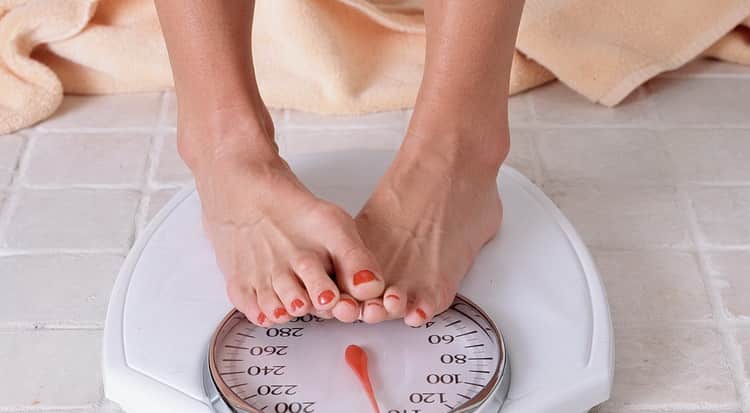
Use is definitely contraindicated if you are allergic to the components of the product: sensitivity to seeds, sunflower oil, nuts, sesame. If after eating halva the baby reacts with allergies, colic, or stool upset, then you need to give up the treat for a month or two. Then you can try again.
Reviews of nursing mothers about halva
Mar'yana, 32 years old
“Everyone told me, even doctors, to eat more halva, so the milk becomes fattier.”
Tatyana, 27 years old
“The only sweet thing I eat is halva. I was still dying for it during pregnancy... But halva - without additives.”
AEL, 21 years old
“Better halva than chocolate. Why not. If it doesn’t cause allergic reactions in your child, eat freely (but don’t get carried away, even though these are oriental, they are SWEETS!!!) Then it’s difficult to lose weight!!!”
Elena, 29 years old
“It all depends on the baby. There is nothing special in regular halva. The main thing is to avoid peanuts.”
Ksenia, 35 years old
“I ate and washed it down with milk. This made my milk flow. But it’s really better to avoid peanuts, as peanuts can cause allergies.”
Natalie, 19 years old
“I’ve been eating halva since the first day, the milk from it is fattier and tastier:) it was recommended to me during the courses and my breastfeeding sister at the maternity hospital advised me. I eat plain sunflowers, about 500 grams a week, wash it down with tea with milk :)”
Katya, 29 years old
“The pediatrician advised me to eat halva to increase lactation. Well, nothing helped, there was less and less milk, and breastfeeding, warm drinks, formulas and teas for lactation did not give any results. I bought halva. I cut off a piece. I'm afraid, but I eat))) I've read about allergies, anaphylactic shock. Half an hour later the tide began to rise. There was no limit to happiness. There was a lot of milk)) That’s how they saved GW.”
Margot, 24 years old
“I love halva very much. There is no better treat for me. I couldn’t wait until the baby was 3 months old to eat... and he was sprinkled... very heavily... just before my eyes, spots began to appear on his arms and legs. I called an ambulance because Fenistil did nothing, he was too weak for such a reaction. It's a pity. I endured it for another year, my cheekbones were cramping, just like I saw in the store.”
Roxana, 20 years old
“My halva didn’t like it, it spilled out((((((“
Lena, 22 years old
“I ate and washed it down with milk. This made my milk flow. But it’s better to avoid peanut halva, as peanuts can cause allergies.”
Natasha, 19 years old
“From the first day I have been eating halva, the milk from it is richer and tastier :) It was recommended to me during the courses, and my breastfeeding sister at the maternity hospital advised me. I eat plain sunflowers, about 500 grams a week, wash it down with tea with milk :)”

